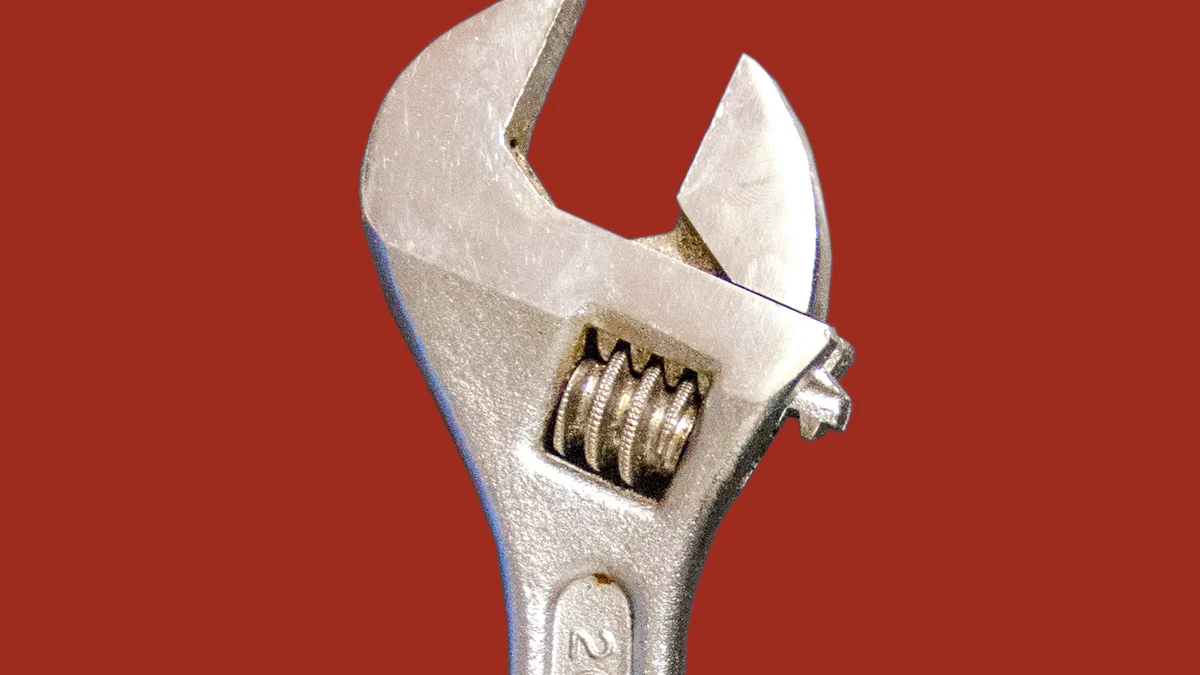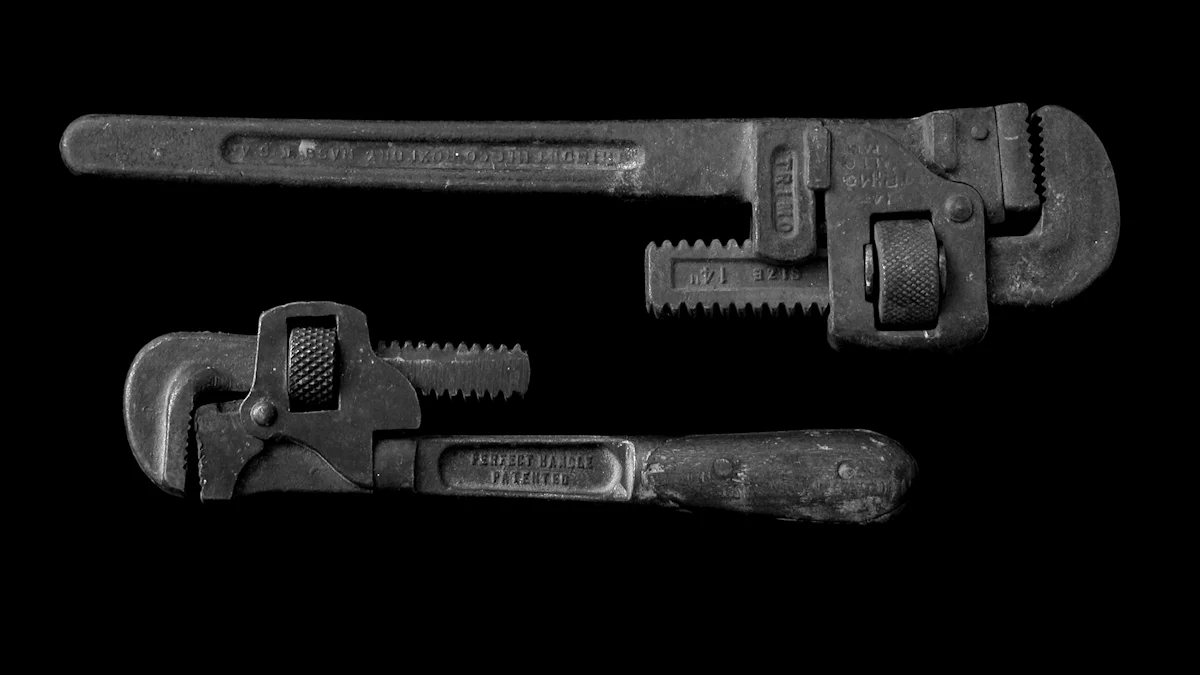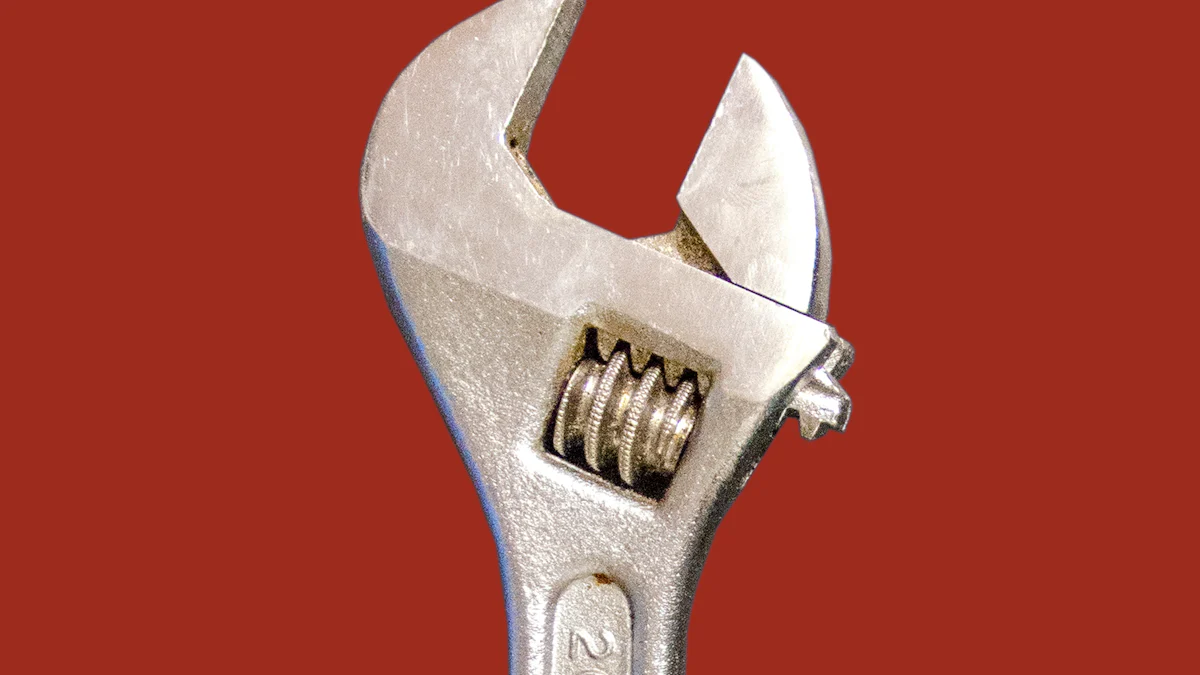
The adjustable spanner tool serves as a versatile instrument in various fields. This tool adapts to different fastener sizes, making it indispensable for repair and maintenance tasks. Understanding the different types of adjustable spanner tools proves crucial for selecting the right one for specific applications. Each type offers unique features that cater to particular needs. The historical evolution of spanner tools highlights their development from simple designs to sophisticated, adjustable versions. This evolution showcases the ingenuity behind creating tools that enhance efficiency and convenience in everyday tasks.
Types of Adjustable Spanner Tools

Crescent Wrench
Design and Features
The Crescent wrench stands out as a popular adjustable spanner tool. The design includes one fixed jaw and one movable jaw. The jaws align nearly parallel to the handle. This feature allows for easy adjustment to fit various fastener sizes. The tool’s handle often features a comfortable grip. This grip ensures ease of use during tasks.
Common Uses
Users frequently employ the Crescent wrench in household repairs. The tool proves useful in automotive maintenance. Many professionals rely on this adjustable spanner tool for plumbing tasks. The versatility of the Crescent wrench makes it a favorite in many toolkits.
Historical Background
The Crescent wrench originated in the early 20th century. The Crescent Tool Company introduced this innovative adjustable spanner tool. The design aimed to provide a more versatile alternative to fixed wrenches. Over time, the Crescent wrench gained popularity due to its adaptability.
Pipe Wrench
Design and Features
The Pipe wrench features a robust design. The tool includes serrated jaws for a secure grip on pipes. The adjustable spanner tool has a long handle for increased leverage. The design allows for easy adjustment to accommodate different pipe sizes.
Common Uses
Plumbers often use the Pipe wrench for tightening and loosening pipes. The tool proves essential in construction projects. Many industries rely on this adjustable spanner tool for heavy-duty tasks. The Pipe wrench excels in situations requiring a strong grip.
Historical Background
The Pipe wrench traces its origins to the late 19th century. Daniel Stillson, an American inventor, developed the first version. The tool quickly became a staple in plumbing and construction. The adjustable spanner tool’s design has evolved over the years, enhancing its efficiency.
Monkey Wrench
Design and Features
The Monkey wrench showcases a unique design among adjustable spanner tools. The tool includes a flat handle and two parallel jaws. One jaw remains fixed, while the other adjusts using a worm gear. This design allows for precise adjustments.
Common Uses
Mechanics often use the Monkey wrench for automotive repairs. The tool proves useful in machinery maintenance. Many professionals prefer this adjustable spanner tool for tasks requiring precision. The Monkey wrench adapts well to various fastener sizes.
Historical Background
The Monkey wrench dates back to the 19th century. Charles Moncky, an American blacksmith, is credited with its invention. The tool gained popularity due to its versatility and precision. Over time, the Monkey wrench became a symbol of industrial progress.
Choosing the Right Adjustable Spanner Tool

Factors to Consider
Size and Adjustability
Size plays a crucial role in selecting an adjustable spanner tool. Different tasks require different sizes for optimal performance. A larger spanner provides more leverage, while a smaller one offers precision. Adjustability ensures the tool fits various fastener sizes. This feature enhances versatility in diverse applications.
Material and Durability
Material determines the durability of an adjustable spanner. Chrome-vanadium steel offers excellent strength for tough jobs. This material resists wear and tear, ensuring longevity. A durable spanner withstands heavy-duty use in demanding environments. Quality materials contribute to the tool’s reliability over time.
Specific Application Needs
Specific tasks demand specific spanner features. Mechanics often require tools with precise adjustments. Plumbers prefer spanners with strong grips for pipes. Construction workers need robust tools for heavy-duty tasks. Understanding application needs guides the selection process effectively.
Practical Tips
Maintenance and Care
Proper maintenance extends the life of an adjustable spanner. Regular cleaning removes dirt and debris. Lubrication keeps moving parts functioning smoothly. Inspecting the tool for wear prevents unexpected failures. Storing the spanner in a dry place avoids rust and corrosion.
Safety Precautions
Safety remains paramount when using adjustable spanners. A secure grip prevents slippage during tasks. Properly adjusting the jaws ensures a tight fit on fasteners. Wearing protective gear minimizes injury risks. Following safety guidelines enhances tool efficiency and user protection.
Frequently Asked Questions
What is the difference between a crescent wrench and a monkey wrench?
The crescent wrench features one fixed jaw and one movable jaw. The jaws align nearly parallel to the handle. This design allows for easy adjustment to fit various fastener sizes. The monkey wrench, however, includes a flat handle and two parallel jaws. One jaw remains fixed, while the other adjusts using a worm gear. This design offers precise adjustments. The crescent wrench often provides a comfortable grip for ease of use. The monkey wrench adapts well to tasks requiring precision.
Can adjustable spanner tools be used for plumbing tasks?
Adjustable spanner tools serve as essential instruments in plumbing. Plumbers often rely on these tools for tightening and loosening pipes. The pipe wrench, a type of adjustable spanner, features serrated jaws for a secure grip. This tool excels in situations requiring a strong hold on pipes. Adjustable spanners eliminate the need for multiple-sized tools. The ability to adjust the spanner ensures a tight grip on various fasteners.
How to maintain the longevity of adjustable spanner tools?
Proper maintenance extends the life of adjustable spanner tools. Regular cleaning removes dirt and debris. Lubrication keeps moving parts functioning smoothly. Inspecting the tool for wear prevents unexpected failures. Storing the spanner in a dry place avoids rust and corrosion. A durable spanner withstands heavy-duty use in demanding environments. Quality materials contribute to the tool’s reliability over time.
Selecting the right adjustable spanner tool holds significant importance for achieving optimal results in various tasks. Each type of spanner offers unique features suited for specific needs, encouraging exploration and experimentation. The versatility of adjustable spanners extends beyond traditional applications, allowing users to adapt them for innovative uses. This adaptability eliminates the necessity for multiple tools, making adjustable spanners indispensable in any toolkit. The evolution of these tools from humble beginnings to essential instruments highlights their practicality and enduring popularity. Adjustable spanners continue to serve as vital assets in numerous fields.
See Also
Scooter Upgrades: High-Quality Parts for Maximum Performance
Discovering Diverse Sock Options for Both Genders
Mastering Winter Comfort with Soft and Cozy Towel Socks
